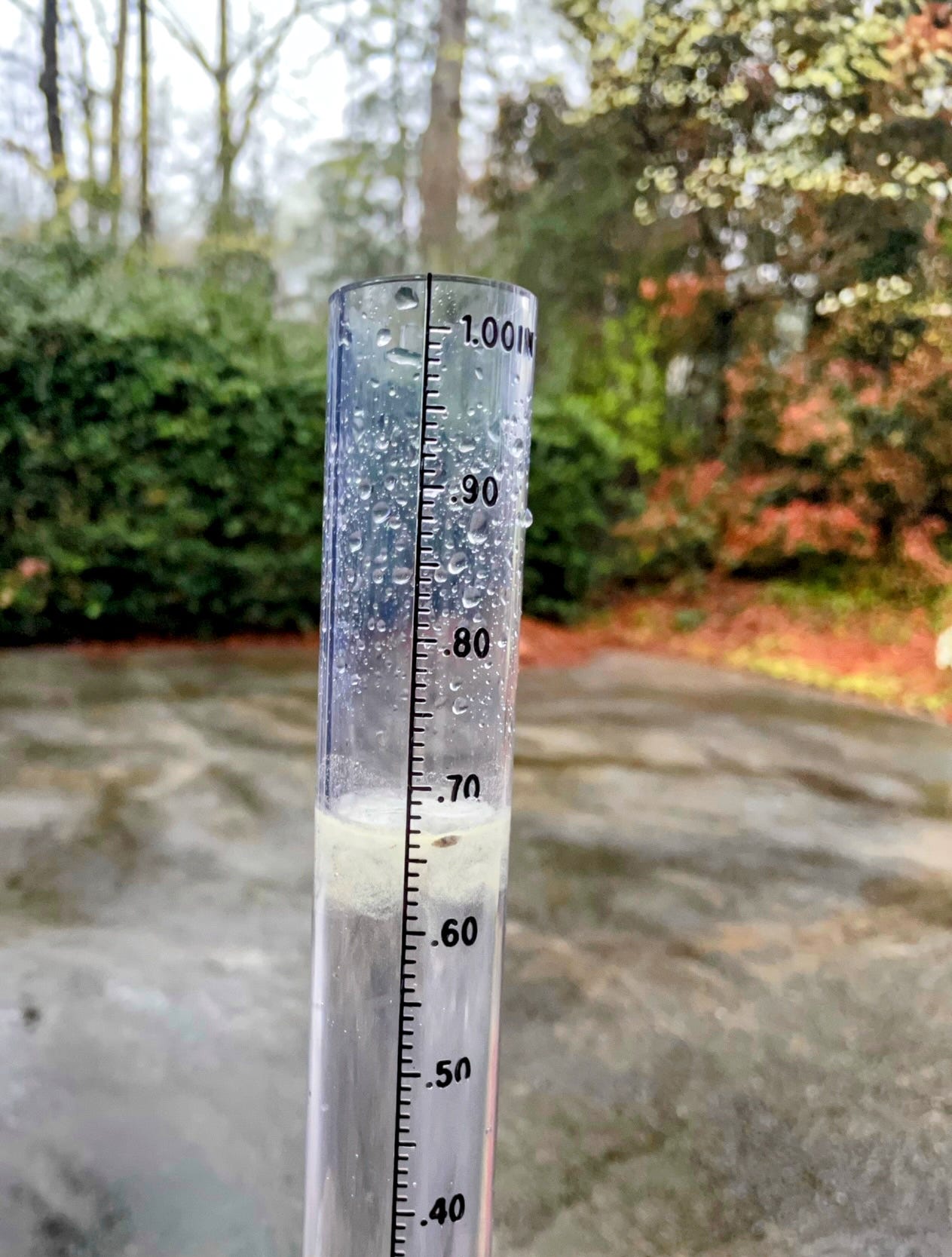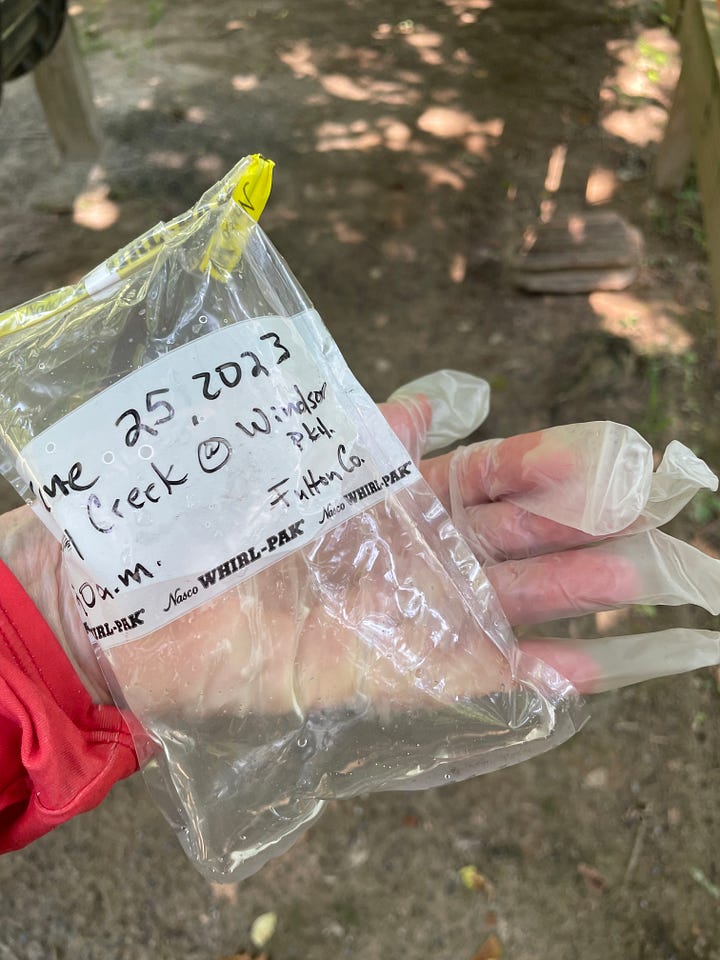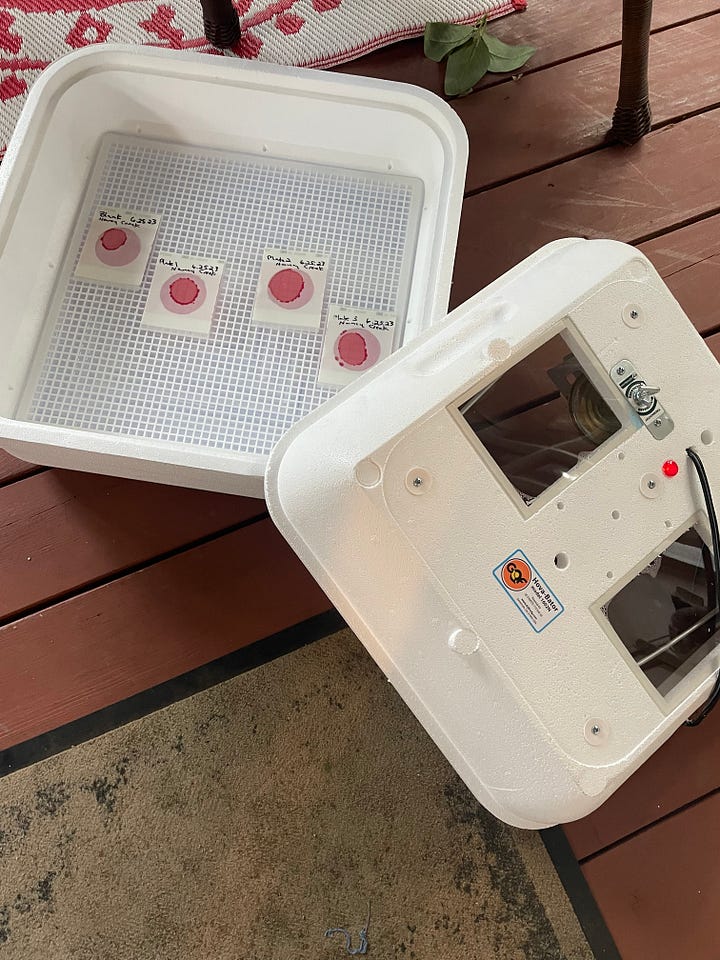“Look, and look again. The world is not just a little thrill for the eyes.” - Mary Oliver.
This week, as promised, is old home week. I’ll look in the rear-view mirror and give an update on some community science projects I’m juggling in the background, even as I introduce fresh topics in The Everyday Scientist.
Just to remind you, I set myself a challenge for 2023: to do community science, aka citizen science, every week of this year. Here I am today at week 28––I’m at the halfway mark, people!––and my work is going strong. If you’ve been a reader, you know my efforts have included learning frog calls, testing creek water for bacteria, counting fireflies, and observing clouds in the daytime and the stars at night. I’m a pretty good juggler, something I already knew, but it feels good to confirm it once again. Below, I’ll review five projects, and I’ve even invented “awards” for them now that they live in my weekly schedule.
CoCoRaHS. I introduced this program, the Community Collaborative Rain, Hail & Snow Network with the January newsletter, “I’ve Seen Frogs, and I’ve Seen Rain.” With CoCoRaHS, volunteer citizen scientists from around the world take a few minutes each day to measure the daily precipitation at their homes. I started with the daily measurements on Jan. 21, submitting a 0.0 for that winter day, a rain-free one at my location. Since then, I’ve been so faithful to my morning measurement habit. It includes my first hit of coffee for the day, so it is a true delight. I’m now up to 127 daily precipitation records submitted. This week, I read about Vermont’s flooding and about how historical rainfall databases may not accurately predict today’s weather because of rapid climate change. In some states, precipitation databases are outdated and inconsistent, which makes input from a volunteer organization like CoCoRaHS even more important. 1 CoCoRaHS gets my Go Viral award because of its active Facebook page where volunteers try to wow each other with pictures of giant hailstones and flooded rain gauges. You roll your eyes? CoCoRaHS people are easily-amused weather nerds, you say? Maybe. But when I posted a picture of the pine pollen trapped in my gauge one damp morning this spring, I loved it when the people freaked out with the likes and comments about something that’s so normal for Georgians.

FrogWatch, the program where I go out to observe frogs, is another project I juggle into my community science lineup each week, but it is not working out like I thought. FrogWatch gets the Always Be Incognito award, because I rarely see frogs, just hear their “yips” as they dive-bomb the pond. Fred and I went to a class to learn frog croaks in January, but we still can’t distinguish species by listening. I’ve only seen 2-3 frogs all this year, despite the many hours I’ve spent hiking and looking for them. Last night, we went on a Frog and Salamander stroll led by the educators from the Cobb County Water System. We did get to see a salamander and two Fowler Frogs, so that was exciting. Our leader for the evening, Michael Kahle, began our walk on a muggy weeknight evening by saying, “I’m from the water department and you may think of us as the ones to deliver good drinking water to your home, but there’s more to it. We do these outings because we want you to think of water more broadly––it’s important to wildlife, to our whole landscape, and especially to the habitats of all these frogs and salamanders we hope to see tonight.” I loved the sentiment of his words and am continually impressed with the projects and programming of the award-winning Cobb County Water System.
iNaturalist is the project I hardly even juggle because I use the app so much that it is practically a part of my regular day. I’ve uploaded nearly 400 images of flora and fauna so far this year, an average of two submissions a day. iNaturalist gets my Swiss Army Knife award for how many ways it can be used. I’ve done BioBlitz events with iNat, gotten intel on what I can expect to find in a landscape I will visit for the first time, and have contributed hundreds of images of research grade data to science. Today, considering those 400 images, I was reminded of what poet Mary Oliver wrote: “Look, and look again. This world is not just a little thrill for the eyes.”2 Nowadays, I’m a much improved “noticer,” and I have iNaturalist to thank for much of that accomplishment.

NASA’s Cloud Observer, a project I’ve juggled routinely for the past few months, gets the Silver Lining award for the way it has given me a fresh appreciation for the ever-changing sky. With this community science project, I get a text when a NASA weather satellite is overhead, and that serves as my prompt to grab my phone, go outside and take a picture of what I see in the sky. Since May, I’ve submitted at least two dozen images to NASA.
Georgia Adopt-a-Stream is connected to my very first community science outing back in Nov. 2022 when Fred, our daughter and I collected water samples from Atlanta’s Procter Creek for water quality testing. In May I took a class (and passed a certification test) to become a bacterial water tester in the Georiga Adopt-a-Stream program. This volunteer work earns the Almost-to-Lab-Coat award because my work requires the use of real scientific equipment like pipettes, Petrifilm plates, an incubator, and––the best part––a mathematical formula. 3 So far, I’ve only tested once at my site, Nancy Creek near my home, and I’m happy to report the levels of bacterial were very low. I’ll go forth with a schedule that’ll have me “down by the riverside” at least once a month.




All this plus a math formula! Coming up:
UGA is again sponsoring a census to count pollinators in our state. I’ll be in on the action, probably down among the New York Ironweed at my favorite butterfly garden in The Blue Heron Nature Preserve. Check it out and join in so we’ll have widespread data for Georgia. Actually, the count has been extended this year to South Carolian and North Carolina.
“To Begin With the Sweet Grass,” Mary Oliver.
At the frog outing this week, I overheard a dad asking how to volunteer with Adopt-a-Stream because he said he wanted to do it with his kids. I thought: What a great idea. Teach your children about the local environment, while casually showing them how math fits into everyday life.








Pam, I'm so enjoying your posts - this one reminded me of the Girl Scout troop learning about water in the little creek by our house - testing water quality, finding critters who live there, etc. Keep "sciencing" you are teaching me every day!